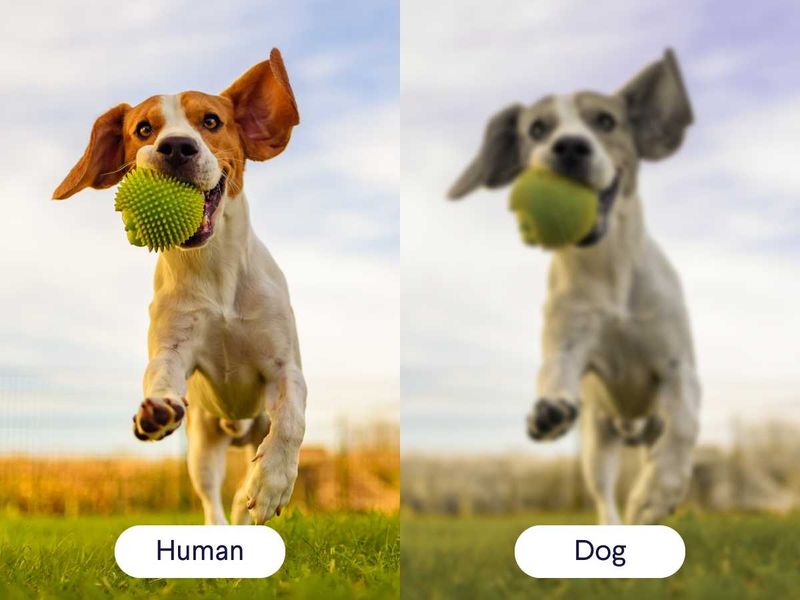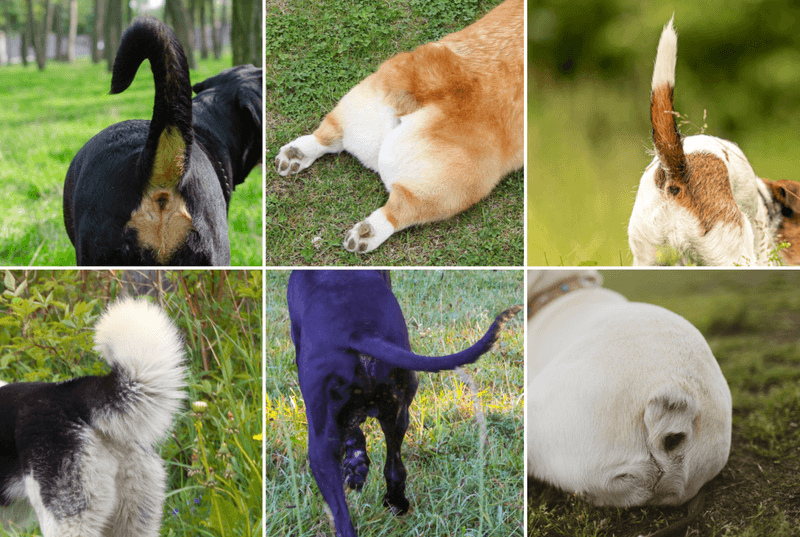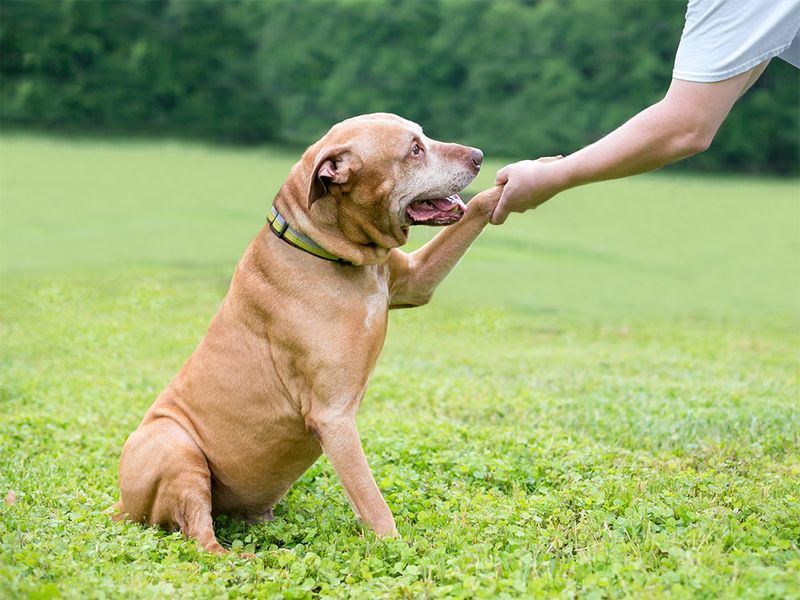Welcome to the world of canine companions, where myths abound as much as wagging tails. While dogs are indeed delightful, they are also surrounded by misconceptions that have persisted over the years. In this blog post, we’ll unravel some of the most popular dog myths and explore the fascinating truths behind them. From dietary misconceptions to behavioral misunderstandings, these insights will offer a new perspective on our furry friends.
1. A Wagging Tail Means a Happy Dog
A wagging tail does not always indicate a happy dog. Tail wagging can mean various things, depending on the situation, posture, and movement speed. For instance, a tail held high and wagging rapidly can signal excitement or aggression, while a low, slow wag might denote insecurity or uncertainty. Understanding the nuances of tail wagging can help you better interpret your pet’s emotions and respond appropriately. This insight can enhance communication between you and your dog, fostering a stronger bond and promoting better interactions.
2. Dogs Eat Grass Because They’re Sick
The notion that dogs eat grass solely because they are feeling unwell is a common misconception. Many dogs enjoy munching on grass for various reasons, such as its taste, texture, or simply out of boredom. Grass-eating is generally normal behavior and not necessarily a cause for concern unless it becomes excessive or leads to vomiting. Always monitor your dog’s overall health and consult a veterinarian if you notice any unusual patterns. Observing your dog’s behavior will provide insights into their needs and contribute to their well-being.
3. Dogs Age Seven Years for Every Human Year
The belief that one canine year equals seven human years is an oversimplification. Dogs age at different rates depending on their breed, size, and health. Puppies and younger dogs age faster during their early years, while larger breeds tend to age more quickly than smaller ones. Understanding your dog’s specific aging process can help you provide age-appropriate care and ensure their needs are met throughout their life stages. Tailoring care to your dog’s unique requirements will support their health and longevity.
4. Dogs Are Completely Colorblind
It’s a widespread myth that dogs are entirely colorblind. While their color perception is not as vivid as ours, they can still see certain hues. Dogs primarily perceive the world in shades of blue and yellow, lacking the ability to distinguish between red and green. This understanding of canine vision can help you choose toys and objects that are visually appealing to them. By catering to their color perception, you can enhance your dog’s playtime experience, making it more enjoyable and engaging.
5. A Dry Nose Means a Sick Dog
A dry nose in dogs is often perceived as a sign of illness, but it’s not always true. Various factors, such as weather, activity level, and sleeping habits, can cause a dog’s nose to dry out. A dry nose alone is not a reliable indicator of health problems. If your dog shows other symptoms, such as lethargy or appetite changes, it’s wise to consult a vet. Paying attention to your dog’s overall behavior and well-being will provide a more accurate picture of their health.
6. Dogs Will Heal Their Wounds by Licking Them
While it’s natural for dogs to lick their wounds, this behavior can sometimes do more harm than good. Excessive licking can lead to irritation or infection, delaying the healing process. It’s crucial to monitor your dog’s wound care and prevent excessive licking by using protective measures like bandages or e-collars. Ensuring proper wound care and consulting a vet if necessary will support your dog’s recovery. Understanding this myth will help you make better decisions regarding your pet’s health and healing.
7. Dogs Are Primarily Carnivores
Though dogs are descendants of carnivorous wolves, they are actually omnivores. Their diet can include a variety of foods such as grains, fruits, and vegetables, along with meat. A balanced diet that includes different food groups is essential for maintaining optimal health in dogs. Providing a nutritious mix of ingredients will cater to their dietary needs and support overall well-being. Understanding the importance of a varied diet can help you make informed decisions about your dog’s nutrition.
8. Dogs Can’t Feel Jealousy
The belief that dogs cannot experience jealousy is inaccurate. Dogs are social animals and can exhibit jealous behavior when they perceive a threat to their bond with their owner. This can manifest in behaviors like attention-seeking, barking, or nudging. Recognizing these signs allows you to address the root cause and maintain harmony within the household. By understanding your dog’s emotions, you can strengthen your relationship and ensure a peaceful coexistence with other pets or family members.
9. Dogs See in Black and White
Contrary to popular belief, dogs do not see the world in black and white. While their color vision is limited compared to humans, they can indeed perceive colors, primarily blues and yellows. This means that a bright blue toy will stand out to them more than a red one. Understanding this aspect of canine vision can help pet owners make more informed choices about toys and other items. By recognizing the colors that dogs can see, you can enrich their environment in a way that is both stimulating and enjoyable.
10. Dogs Only Wag Their Tails When Happy
Tail wagging is often associated with happiness, but it can convey a range of emotions. A wagging tail does not always mean a dog is happy; it can also indicate excitement, nervousness, or aggression. The tail’s position and movement speed provide clues about a dog’s emotional state. Observing your dog’s tail wagging in context with other body language signals will improve your ability to interpret their feelings. This understanding is key to better communication and fostering a positive relationship with your pet.
11. Dogs Shouldn’t Eat Human Food
While some human foods are harmful to dogs, many can be shared safely. Foods like carrots, apples, and plain cooked meats can be healthy additions to their diet when given in moderation. It’s essential to be aware of the foods that are toxic to dogs, such as chocolate or onions. By introducing safe human foods, you can provide variety in their diet and enjoy shared meals. Always research and consult with a veterinarian before making any dietary changes for your dog.
12. Dogs Dig Holes Out of Boredom
While boredom can lead dogs to dig, it’s not the only reason for this behavior. Dogs may dig for various reasons, such as seeking comfort, hunting for small animals, or trying to escape a confined area. Understanding the underlying cause of your dog’s digging can help you address the behavior effectively. Providing mental and physical stimulation, along with a secure environment, can reduce unwanted digging. Observing your dog’s behavior and making necessary adjustments will enhance their happiness.
13. Dogs Hate Cats
The idea that dogs and cats are natural enemies is a stereotype that doesn’t hold true for all pets. Many dogs and cats can coexist harmoniously, forming strong bonds over time. Successful introductions, positive reinforcements, and understanding individual temperaments are key factors in fostering a peaceful relationship. By debunking this myth, you can explore the possibility of having both pets coexist, enriching your home environment. Patience and understanding will create a harmonious atmosphere for both animals.
14. Dogs Express Guilt When They Look ‘Guilty’
The classic ‘guilty’ look in dogs is often a response to human cues and not an expression of guilt. Dogs may exhibit behaviors such as avoiding eye contact or lowering their heads when they sense displeasure from their owner. These actions are more about appeasement than genuine remorse. Understanding this behavior can help you manage your expectations and approach your dog with fairness. Focusing on positive reinforcement rather than punishment will lead to better behavioral outcomes.
15. Dogs Love Being Hugged
Though some dogs tolerate hugs, many don’t enjoy them. Hugging can be perceived as a restrictive action, causing discomfort or stress. It’s important to pay attention to your dog’s body language to determine their comfort level with physical affection. Recognizing signs of stress or unease will help you interact in ways that are enjoyable for both of you. Respecting your dog’s personal space and preferences will strengthen your bond and create a more comfortable environment for your pet.
16. Dogs Who Growl Are Always Aggressive
Growling is often misinterpreted as a sign of aggression, but it can indicate various emotions, including fear, anxiety, or even playfulness. It’s a form of communication that should be understood in context. Observing accompanying body language can help you interpret the true meaning behind the growl. By recognizing and respecting your dog’s communication signals, you can prevent misunderstandings and foster a nurturing relationship. Responding appropriately to growling will enhance your pet’s trust and security.
17. Dogs Will Naturally Protect Their Owners
While many dogs have protective instincts, not all are naturally inclined to protect their owners in every situation. A dog’s protective behavior depends on factors such as breed, training, and individual temperament. Some dogs may bark to alert their owners, while others might need guidance to understand protective roles. Understanding your dog’s instincts and providing appropriate training will help you develop their protective abilities. This will create a safe and trusting relationship between you and your pet.
18. Dogs Can’t Learn New Tricks as They Age
The saying ‘You can’t teach an old dog new tricks’ is misleading. Dogs of all ages are capable of learning new skills and behaviors with patience and positive reinforcement. Training sessions should be short and engaging, considering the dog’s physical and mental capabilities. Older dogs can benefit from learning new tricks as it keeps their minds sharp and provides mental stimulation. Embracing this approach will enhance your bond with your dog and improve their quality of life.
19. Dogs Are Smarter Than Cats
The debate over whether dogs are smarter than cats is a topic of lighthearted contention. Intelligence in pets is multifaceted and includes problem-solving, social skills, and adaptability. Dogs and cats excel in different areas, making comparisons challenging. Recognizing and appreciating the unique qualities of each animal enhances your relationship with them. By valuing their individual strengths, you can provide enriching experiences suited to their talents. This understanding fosters a more fulfilling companionship with both dogs and cats.



















